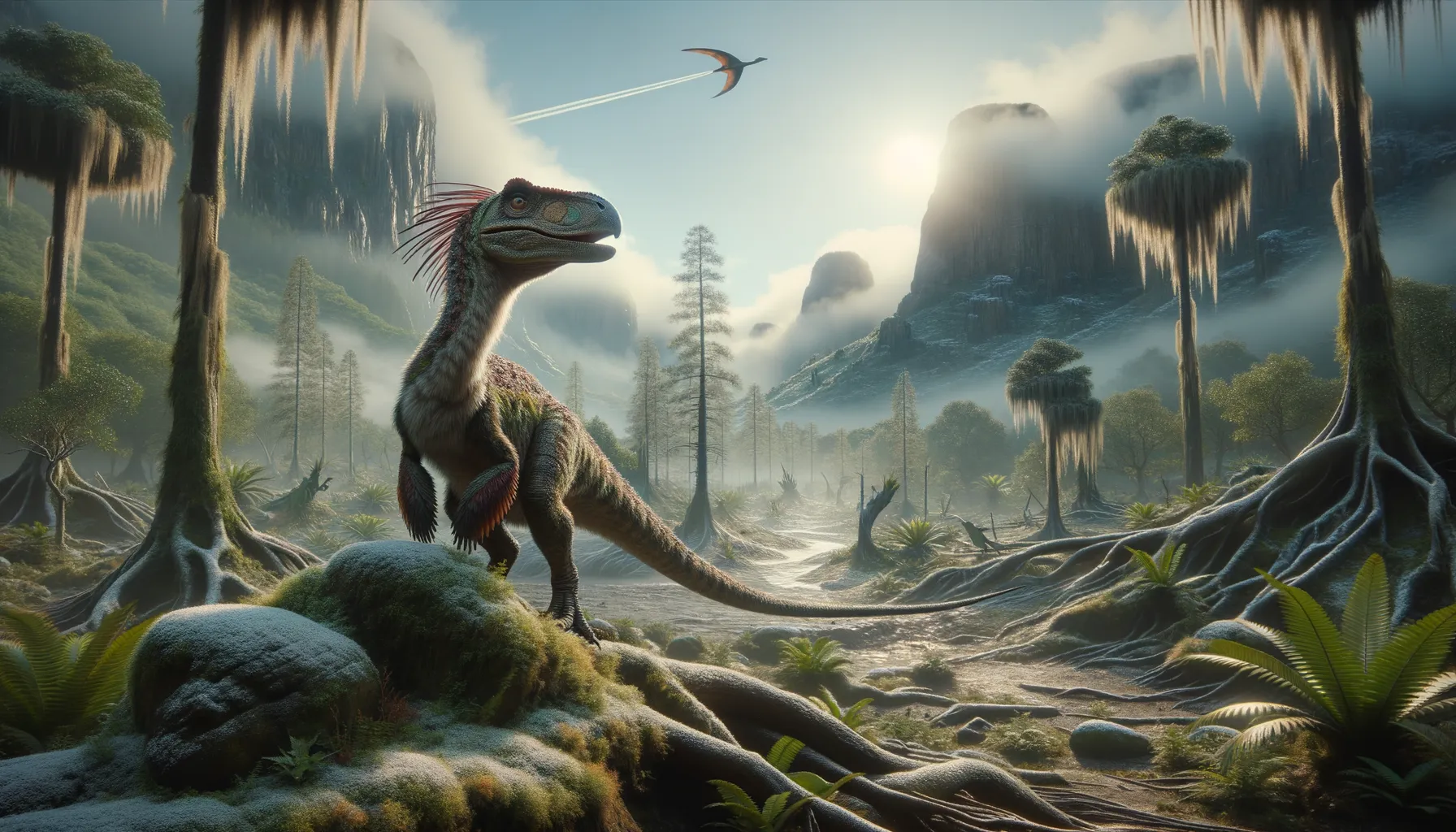
Oculudentavis Khaungraae
Tiny dinosaur, big evolutionary mystery!
Period
Cretaceous
Length
About 1.4 centimeters long.
Height
Around 1.5 centimeters tall.
Weight
Approximately 2 grams.
Oculudentavis khaungraae is one of the smallest known dinosaurs, initially thought to be a bird. Its discovery in amber from Myanmar revealed its tiny size and unique features. Anatomically, it blends characteristics of lizards and birds, indicating a complex evolutionary path. With its beak-like structure and sharp teeth, it offers a glimpse into the diversity of life during the Cretaceous period.
Diet
Oculudentavis likely fed on tiny insects or arthropods. Its sharp teeth suggest a carnivorous diet, similar to birds today that snack on bugs.
Hunting
Given its small size, Oculudentavis would likely have hunted stealthily. It might have relied on quick, precise movements to capture small prey.
Environmental challenges
Living in the Cretaceous period, it faced challenges from changing climates and the presence of larger predators. The dense forested environment might have offered protection but also required adaptation to limited resources. Competition with other small creatures could have been significant in its survival.
Speed
Likely very slow due to its tiny size.
Lifespan
Possibly a few years, similar to small birds.
First discovery
Discovered preserved in amber in Myanmar.
Fun Facts
- Oculudentavis Khaungraae was first discovered encased in 99-million-year-old Burmese amber, making it one of the smallest known Mesozoic dinosaurs.
- Its name means 'eye tooth bird', highlighting its prominent eyes and full set of teeth despite its tiny size.
- This dinosaur was roughly the size of a modern-day bee hummingbird, making it exceptionally tiny compared to most of its dinosaur relatives.
- Oculudentavis Khaungraae had eyes with a unique pattern of scleral rings, suggesting it had great vision, perhaps even better than today's owls.
- Due to its size and features, there was initially some debate about whether Oculudentavis Khaungraae was a bird or a dinosaur, until further studies clarified its position.
- The fossilized remains of this species provide important insights into the diversity of life that existed alongside giant dinosaurs during the Cretaceous period.
- Oculudentavis Khaungraae's discovery showcased how evolving methods in paleontology can unveil new information about ancient species even from small fossil samples.
Growth and Development
Due to its diminutive size, it likely had a rapid growth cycle. This would help in quickly adapting to shifting environments. It may have hatched in a state ready to fend for itself, given its possible isolation.
Habitat
Oculudentavis likely inhabited tropical forest environments. The amber fossil suggests a habitat rich in trees. These dense forests would provide shelter from larger predators and resources like insects.
Interaction with other species
Being tiny, it might have had limited direct interactions with larger dinosaurs. However, it likely shared its habitat with other small birds and reptiles, leading to competition for food. It may have also been preyed upon by small predators.
Natural lifespan
Its natural lifespan was probably short, much like small birds today.
Reproduction
Oculudentavis likely laid eggs, as most reptiles and early birds do. Its small size suggests small clutches of maybe one or two eggs. Parental care might have been minimal.
Social behaviour
Its social behavior is largely unknown, but its size suggests solitary or small-group living. It might have exhibited minimal social interaction, focusing more on survival.
Fossil locations
The primary fossil of Oculudentavis was found in amber deposits in Myanmar. This discovery provides exceptional preservation, allowing detailed studies of its anatomy. Other potential fossil sites remain unexplored and are crucial for understanding its range.
